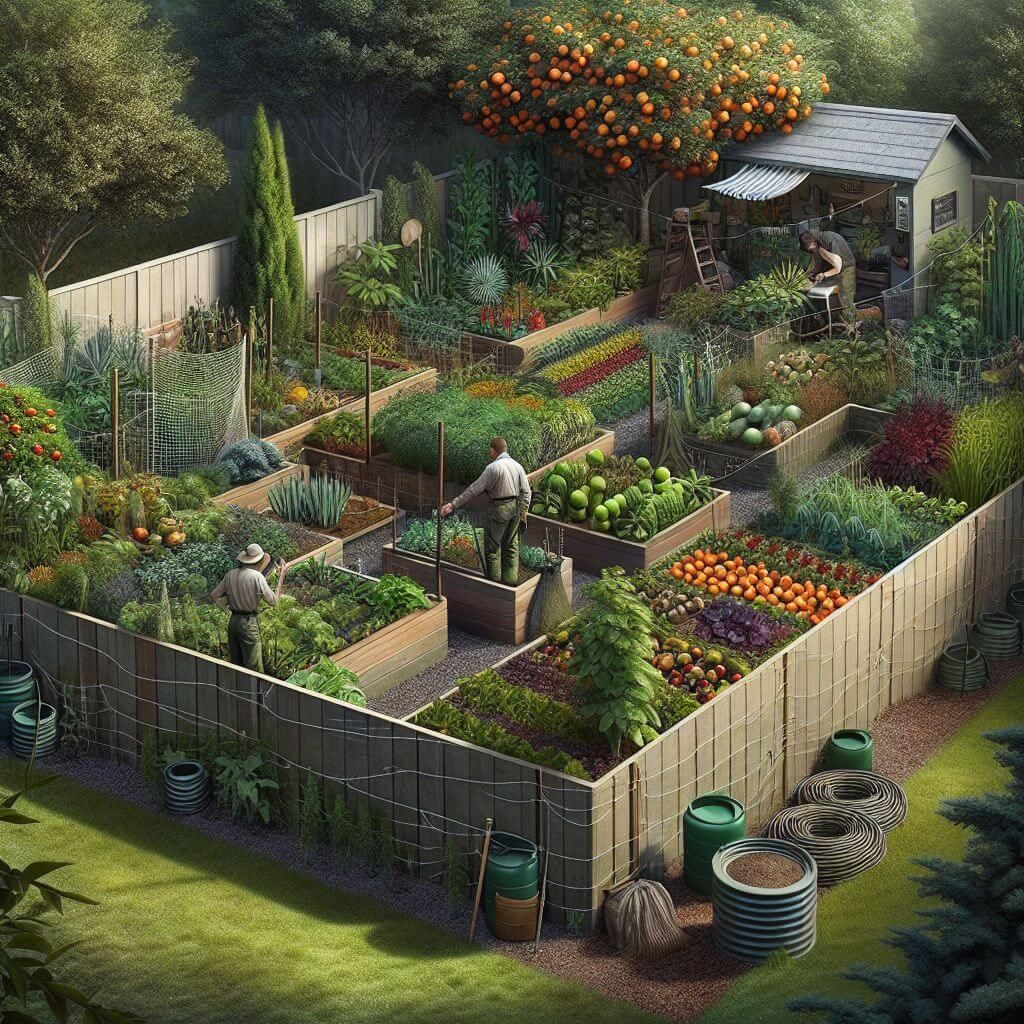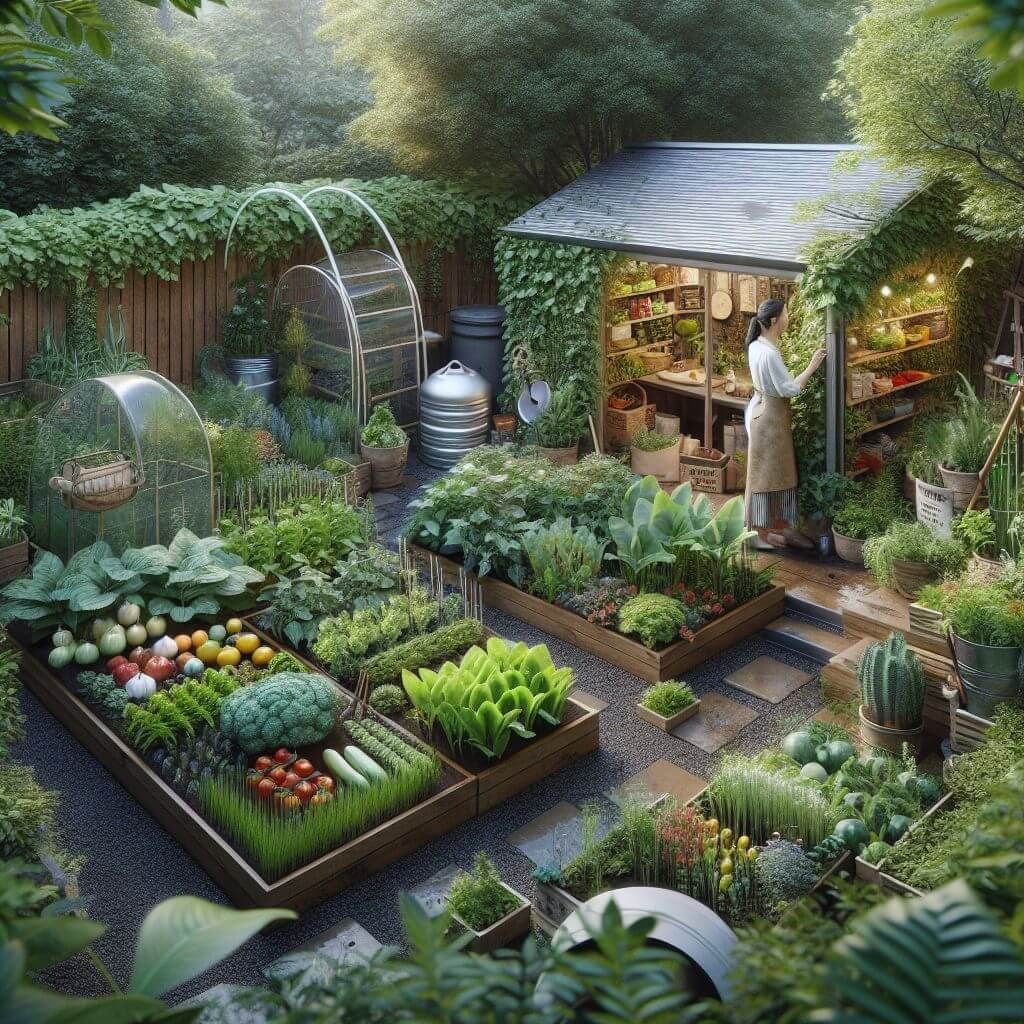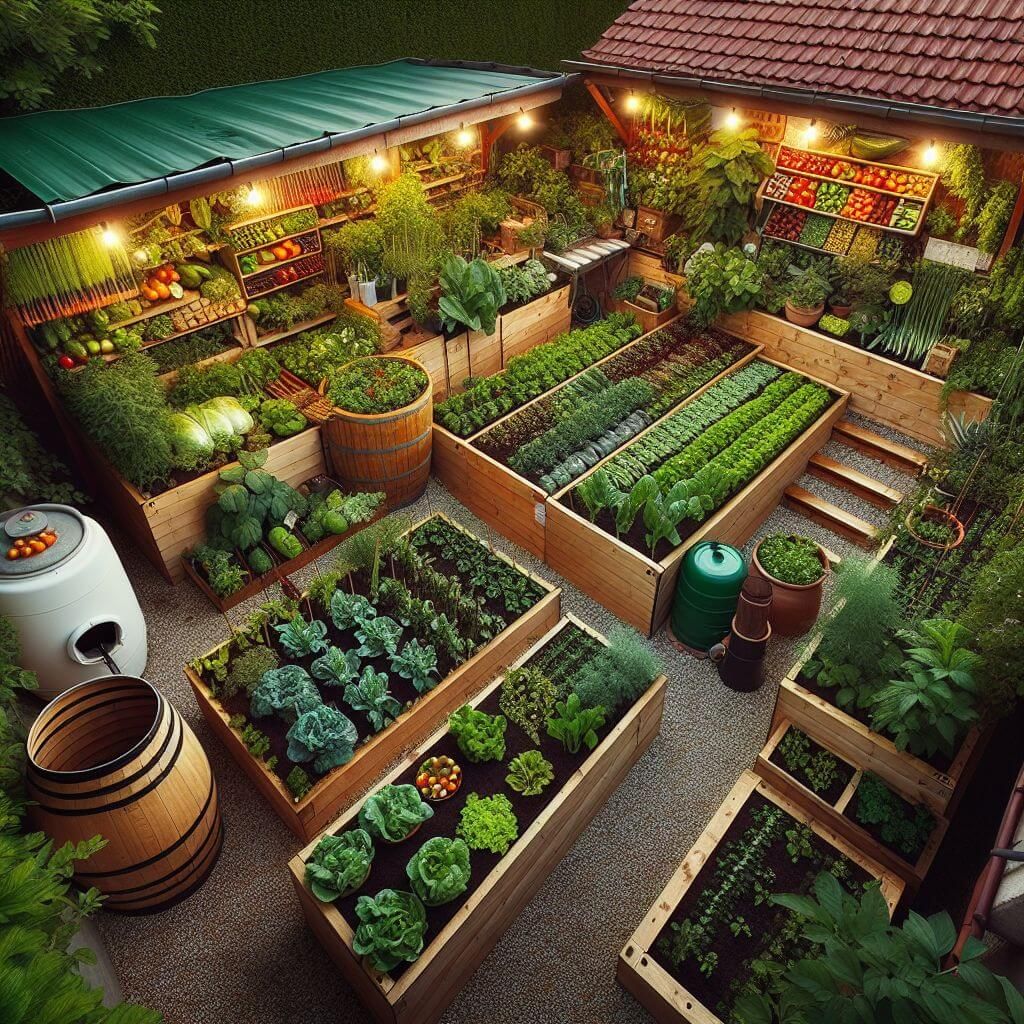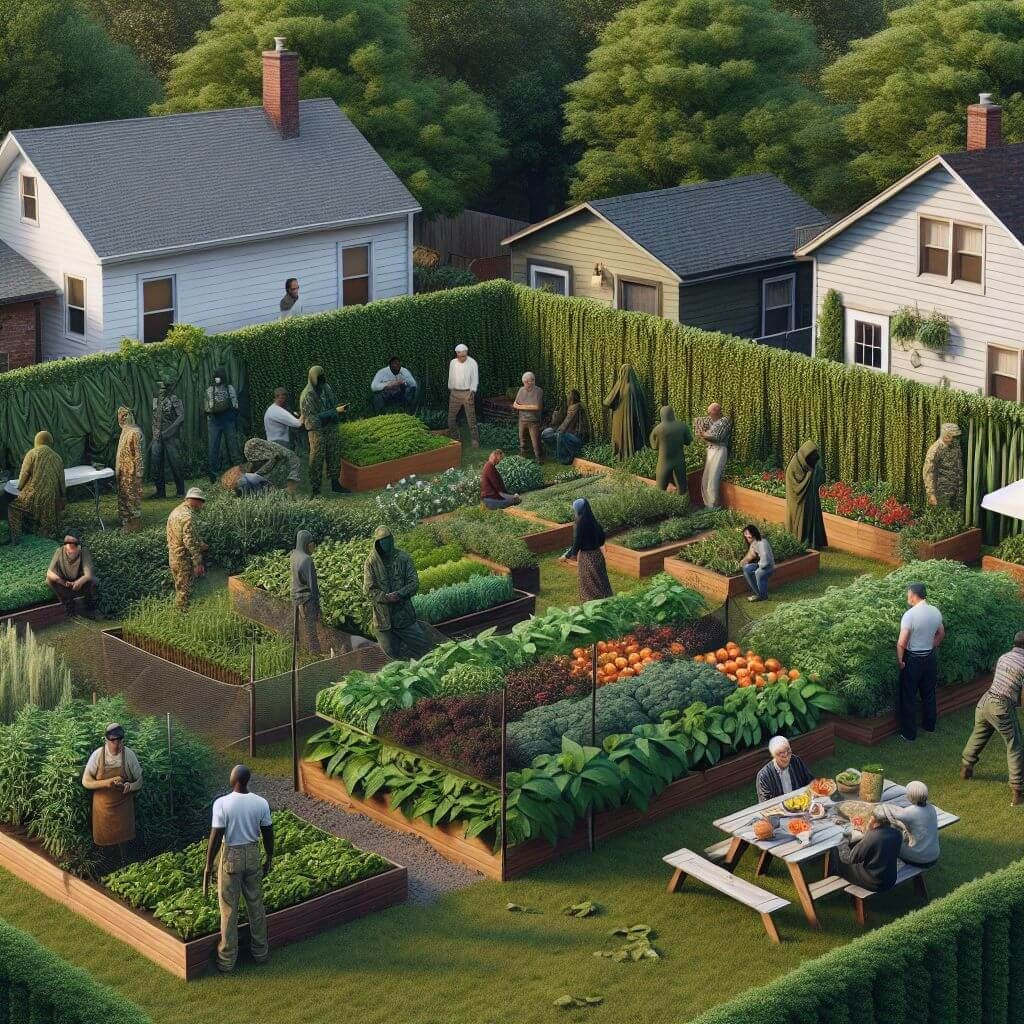
Key Takeaways
- Stealth gardening enables urbanites to grow food unnoticed for security and self-sufficiency.
- Using edible plants that blend with ornamentals can disguise a food garden in plain sight.
- Strategic placement and plant selection are crucial for successful camouflage gardening.
- Vertical gardening and creative containers can maximize space and enhance concealment.
- Community stealth gardens can bolster neighborhood food resilience while remaining inconspicuous.
Disguising Delicious: An Intro to Invisible Edibles
In the heart of the city, where every inch of space is precious, growing your own food can seem like a far-off dream. But what if I told you that your balcony, rooftop, or even that little strip of land by the sidewalk could become a source of fresh, healthy produce? Enter the world of stealth gardening – a savvy approach to urban agriculture that keeps your veggies hidden in plain sight.
What is Stealth Gardening?
Stealth gardening is like the secret agent of urban agriculture. It’s all about growing food in ways that don’t scream “garden” to anyone passing by. Why? Because in some urban areas, having a visible garden can attract unwanted attention, whether from pesky critters or from folks who might not respect your hard work. So, we use a bit of cunning to keep our crops under wraps, blending them with the urban landscape.
Why Camouflage Your Crops?
You might wonder why you’d need to hide your garden in the first place. Well, it’s not just about keeping your tomatoes to yourself. It’s about creating a sustainable source of food that’s secure from potential threats, be it a nosy neighbor or tougher times when food scarcity hits. Plus, it’s about utilizing every space efficiently, which is essential in a concrete jungle.
Mastering the Art of Urban Camouflage
To get started, you need to think like a designer and a botanist rolled into one. Your goal is to make your edible plants look like they’re just another part of the urban flora. This means choosing plants that don’t stand out and placing them where they’re least likely to be identified as food sources. For inspiration, consider exploring urban garden designs that effectively utilize unconventional spaces for growth.
Choosing Low-Profile Plants
When picking plants for your stealth garden, opt for those that blend in with ornamental plants or that don’t look like typical garden fare. Think leafy greens that can pass as bushes, herbs that double as ground covers, or even fruiting plants with a non-traditional appearance.
Strategic Plant Placement
Where you place your plants can make a world of difference. Mix your edibles in with flowers and shrubs, or tuck them in unexpected spots like under a staircase or along a fence. The idea is to make them a natural, unassuming part of the landscape.
Layering Your Landscape: Tips and Tricks

Layering is key in stealth gardening. You want to create a tapestry of plants that masks your edibles. Here’s how:
Mixing with Ornamentals
Begin by interplanting your edibles with decorative plants. Flowers can attract pollinators, which benefit your entire garden, and they can also serve as a camouflage. For example:
- Plant marigolds around your vegetable patch to deter pests.
- Use chives and basil as border plants – they’re pretty and functional.
- Intersperse strawberry plants with ground covers to conceal their fruits.
Remember, the goal is to make your edible plants look like they’re just another part of the urban flora. You’re not only creating a garden; you’re painting a living landscape that feeds both the soul and the stomach.
Utilizing Vertical Spaces
Vertical gardening is a game-changer in small spaces. Use trellises, wall planters, or even repurposed items like pallets to grow upwards. Not only does this save space, but it also keeps your crops out of the direct line of sight, adding another layer of concealment. Climbing beans, peas, and even some varieties of squash are perfect for vertical growing.
Creative Containers and Hidden Havens
The beauty of containers is that they can be moved and placed strategically to blend in with their surroundings. Plus, they can be disguised as decorative elements. Think about using hanging baskets for cherry tomatoes or herbs, or planting lettuce in window boxes that look like they’re full of flowers at first glance.
The Invisible Buffet: Selecting the Right Crops
Choosing the right plants is essential for a stealth garden. Here’s what to look for:
Edibles That Blend In
Some plants are naturals when it comes to blending in. For instance, Swiss chard can pass for ornamental foliage with its bright red stems, and certain varieties of peppers can look like ornamental plants. Look for edibles with unique or subdued colors that mimic common non-edible plants.
Keep an eye out for part 2 where we’ll dive deeper into selecting the right plants, effective gardening techniques, and how to nourish your stealth garden for maximum yield. Remember, the key to successful urban camouflage gardening is creativity, resourcefulness, and a touch of stealth.
Expert Tweaks to Fool the Eye
Color Coordination with Non-Edibles
Color plays a huge role in stealth gardening. Choose edibles with foliage and flowers that match the color palette of your non-edible plants. This creates a seamless visual flow that can disguise the presence of your crops. For example, pair purple basil with lavender or plant red-leaf lettuce near red coleus to trick the casual observer.
Naturalistic Chaos versus Orderly Rows
Most people associate gardens with neat rows and clear organization. To camouflage your crops, ditch the traditional layout. Opt for a more naturalistic approach with irregular groupings and intermixed plant varieties. This not only confuses the onlooker but also mimics the diversity found in nature, which can be beneficial for pest control and pollination.
Urban Oasis: Water and Care for Stealth Gardens

Even hidden gardens need TLC. Here’s how to do it without drawing attention: For more detailed strategies, explore this guide on stealth gardening.
Efficient Irrigation Tactics
Water is the lifeblood of any garden, but in an urban setting, you need to be smart about it. Use drip irrigation or soaker hoses for a low-profile watering system that minimizes water waste and keeps your garden thriving quietly.
Remember, the key to efficient irrigation is consistency and timing. Water in the early morning or late evening to reduce evaporation and ensure your plants get the moisture they need without excess.
Stealthy Fertilization and Maintenance
When it comes to feeding your garden, choose organic fertilizers that are less likely to draw attention with strong odors. Compost teas or slow-release pellets are excellent options. As for maintenance, keep your activities low-key. Prune and harvest at less busy times to stay under the radar.
When the Garden Grows: Expansion and Adaptation
Your stealth garden is thriving, but you want more. Here’s how to expand without blowing your cover:
Scaling Up Secretly
To increase your garden’s yield, look for additional inconspicuous spaces to cultivate. Consider community spaces that are underutilized, or collaborate with neighbors to create a network of hidden gardens. Just ensure that any expansion is done gradually to avoid sudden changes that could attract attention.
With these strategies in hand, you’re well on your way to creating an urban garden that’s as incognito as it is bountiful. Stay tuned for the final part of our series, where we’ll delve into the social aspects of stealth gardening and how to nurture a community of discreet urban farmers.
Neighborhood Nourishment: Building Community Stealth Gardens

Stealth gardening is a growing trend in urban areas, where community members collaborate to create hidden gardens that provide fresh produce in unexpected places. These essential survival gardens not only enhance food security but also strengthen neighborhood bonds.
Collaborative Growing
One of the most empowering aspects of stealth gardening is its potential to foster community resilience. Imagine a network of hidden gardens throughout your neighborhood, each contributing to a collective pantry. Start by connecting with like-minded neighbors and share your vision. Propose a plant swap or a communal growing space where everyone can contribute and benefit.
Education and Outreach
Knowledge sharing is vital. Host workshops or create online resources to teach others about the benefits and techniques of stealth gardening. By educating your community, you’re not just growing plants; you’re cultivating a movement towards self-sufficiency and food security.
Frequently Asked Questions (FAQ)
Is it legal to grow food in any urban space?
It depends on your location. Always check local ordinances before planting in public spaces or unused land. However, you usually have the green light to grow in your own space, like yards and balconies.
How can I prevent animals from finding my stealth garden?
The trick is to use natural repellents and barriers. Plant strong-smelling herbs like mint or garlic around the perimeter, and consider physical deterrents like netting or fencing that blend with the environment.
Can stealth gardens provide enough food for a family?
With careful planning and maintenance, a stealth garden can supplement a family’s diet with fresh produce. However, the yield depends on the size of your space and the variety of plants you grow.
What are the best plants for a stealth garden in a shady area?
- Leafy greens like spinach and kale thrive in partial shade.
- Herbs such as parsley and cilantro can also do well with limited sunlight.
- Root vegetables like carrots and beets are another good option for shaded gardens.
How do I start a community stealth garden without drawing too much attention?
Start small and involve your community from the beginning. Use existing community spaces like churchyards or unused lots, and incorporate plants that don’t obviously look like food crops. Engage community members in the planting and care process, so the garden becomes a shared secret.
Ready to reap the rewards of your very own stealth garden? Fantastic! Remember, the key to a thriving clandestine crop is starting with quality seeds that will blend beautifully into the urban canvas. After careful consideration and strategizing, it’s time to sow those seeds of secrecy. For the best in diverse, hardy and unnoticeable edible varieties, take a sneak peek at this collection we’ve gathered just for you. So why wait? Embrace the thrill of covert cultivation today to embark on your urban horticultural adventure. The city is your garden – let’s grow!






